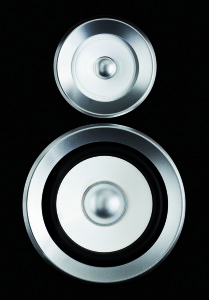Choral Warm-Downs - Turning Tradition on its Head
By Dr. Timothy Seelig, choral conductor and teacher
Tired of the same old warm-ups? We all are. So let’s start over — with a brand new look.
There has always been much debate about whether it is necessary to do choral warm-ups at the beginning of every rehearsal as we were taught. This debate has been going on since there was such a thing called a choir.
Do choral warm-ups really get us to our ultimate goal, or are they really just killing time because our choir director did them?
What we really need are effective, efficient choral warm-downs! It’s not your job, nor do you actually have the time, to warm up your singers.
 First, a warning. This article is not for you saints who have choir rehearsals before school at 7:30 a.m. or sing for early church services. This article is for anyone who leads a chorus that rehearses any time after the respectable hour of noon!
First, a warning. This article is not for you saints who have choir rehearsals before school at 7:30 a.m. or sing for early church services. This article is for anyone who leads a chorus that rehearses any time after the respectable hour of noon!
The truth is that most people use their voices in their daily lives, whether at work, play, or home. Few people arrive at our rehearsals with a completely fresh, unused set of vocal folds. What they have been doing, however, is speaking, not singing.
There is a familiar adage from the historic Italian School: Si canta come si parla (One sings as one speaks). This could not be farther from the truth.
Here is the problem (and one that every speech therapist points out and charges you for): In normal speech,
- we rarely pay attention to posture
- we almost never breathe or use the breath correctly
- we speak too low in our register
- we do not enunciate or use articulators
Simply put, in daily speech we are just lazy. This won’t work for singing — or speaking. What is our concern is that the habits our singers use in speech seven days a week need to be reversed in a very short warm-down before they sing.
If you look at those four major deficiencies in our speech patterns, it is the perfect regimen to reverse the bad habits your singers use when not in your presence. It outlines a very clear and succinct path of instruction.
It does not require a long, complicated set of warm-ups. On the other hand, they are reminders that you, as perhaps the only voice instructor many of your singers have ever had, share with them. This can be through warm-downs, modeling, or excerpts from the repertoire you will rehearse.
The absolute most important thing we do at the outset of the warm-down is simply to focus their attention. Our singers come to rehearsal from hectic, full lives unprepared for the task ahead. It is absolutely critical that they leave those distractions, and baggage, at the door.
If we consciously reverse the four bad habits listed earlier, it will lead us to a very simple warm-down. These steps should always be addressed in the same order.
![]() Get them moving, stretching, massaging, interacting, jumping, running, and twisting, and most of all teach them how to stand! Ask them to slump back to their daily posture. Then ask them, on the count of three, to “hold your instrument for singing.” You’ll be shocked — as will they — how they respond.
Get them moving, stretching, massaging, interacting, jumping, running, and twisting, and most of all teach them how to stand! Ask them to slump back to their daily posture. Then ask them, on the count of three, to “hold your instrument for singing.” You’ll be shocked — as will they — how they respond.
![]() Invite them to breathe. Remind them that we use only a small percentage of our lung capacity for daily life. We need more for singing. Show them how to find that extra capacity. Then ask them to sing a phrase from a song while blowing on their index finger. This gets them accustomed to using the breath as opposed to starving the vocal folds of air, as we so often do in speech.
Invite them to breathe. Remind them that we use only a small percentage of our lung capacity for daily life. We need more for singing. Show them how to find that extra capacity. Then ask them to sing a phrase from a song while blowing on their index finger. This gets them accustomed to using the breath as opposed to starving the vocal folds of air, as we so often do in speech.
![]() As they sing gently, stretch them upward in their range. Have them sing a lovely phrase from the music they will be rehearsing. Then move that exact phrase up by half-steps, allowing them to stretch their vocal folds. Move it up two or three half-steps, releasing muscle each time. When they return to the original key, it will actually feel low and comfortable to them!
As they sing gently, stretch them upward in their range. Have them sing a lovely phrase from the music they will be rehearsing. Then move that exact phrase up by half-steps, allowing them to stretch their vocal folds. Move it up two or three half-steps, releasing muscle each time. When they return to the original key, it will actually feel low and comfortable to them!
![]() Have the singers speak in an exaggerated stage whisper a portion of text from one of the pieces you are singing — no vocal fold involvement at all. They will feel how the consonants and use of articulators require connection to the abdominal muscles and diaphragm. Then have them sing the phrase. You will be shocked at the result. Just for fun, ask your singers to sing a phrase holding their pencil in their lips throughout. They will see how truly lazy they have been. We are not ventriloquists!
Have the singers speak in an exaggerated stage whisper a portion of text from one of the pieces you are singing — no vocal fold involvement at all. They will feel how the consonants and use of articulators require connection to the abdominal muscles and diaphragm. Then have them sing the phrase. You will be shocked at the result. Just for fun, ask your singers to sing a phrase holding their pencil in their lips throughout. They will see how truly lazy they have been. We are not ventriloquists!

When I was in school, I took typing. Perhaps you did as well. The first thing I learned was Home Row. As you know, Home Row was exactly what it implies. It is where your fingers rest — where they are most comfortable. Certainly your fingers stretch beyond Home Row to achieve all sorts of other wonderful things, but they return there often. It is where they are grounded and comfortable. To begin with, your fingers anywhere else would be outrageous.
Your singers should know where their “vocal” Home Row is. What does that mean? Ask them to sing any note in a chord you give them. It should be as perfect as they know how to make it. You then shape it, color it, describe it. That ideal sound resides in your mind’s ear. You must know enough vocal/choral pedagogy to communicate clearly to them exactly how to achieve the sound you desire. That is Home Row.
There are a few things I would do to play around with Home Row.
DYNAMICS
The first is numbered Messa di voce. Ask your singers to sing the vowel you choose, let’s say “ah.” Ask them to start pianissimo, move to fortissimo, and then move back. As they are doing this, you count with your fingers from 1 to 8 and back to 1. Then ask them, from their kinesthetic memory, to sing a 3, then a 5, maybe a 1, and then an 8. I never use dynamic terms anymore. I give them numbers. There are just too many variables when I say, for example, “I want this to be piano.” It means different things to different people. But a 3 is always a 3 with everyone in the chorus. And, if you are having issues balancing your chorus due to personnel, you can ask the basses to sing consistently at around a 6 as their Home Row, the tenors a 4, altos a 5, and  sopranos a 1 (just kidding). This will help you enormously when one section is consistently louder than another. Ask them to sing one number less.
sopranos a 1 (just kidding). This will help you enormously when one section is consistently louder than another. Ask them to sing one number less.
Exercise: Build from the bottom up. Start with a dynamic of 7 in the bottom, moving to a 4 in the top with each voice part. Voila! Reverse it just for fun. Bottom voices sing a 4, leading up to the top voices singing a dynamic of 7. This top-heavy chord will never blend.
TONE COLOR
Woofer/Tweeter. This is resonance adjustment — not placement. You can’t actually “place a tone.”
The tweeter is the front — the mouth with hard surfaces such as the hard palate and teeth. The woofer is the pharynx and soft surfaces. Choose a note. Ask your singers to place their index finger vertically in front of their mouth. Have them sing a very forward, thin, bright “ah.” Ask them to move their finger back toward the jaw and then by the ear. As they do so, they will begin to open the pharynx (woofer) and limit the resonance in the mouth (tweeter). The first sound is “too bright.” The final sound is “too dark.” The mixed sound — in the middle — is “just right.” I do not use terms about color much at all anymore. I ask for more woofer or more tweeter. Works like a charm.
Exercise: Again, build from the bottom up. Start with more tweeter in the lower voices, changing to more woofer as you move up the chord. Just for fun, reverse it. Ask your lower voices to use lots of woofer and to increase the tweeter as you go higher in the chord. You — and they — will notice immediately that there is no way to blend such resonance adjustment.
In summary, you have done some thinking about the old-school instruction of “You must start every rehearsal with 15 minutes of warm-ups — unrelated to the repertoire you are singing — or life for that matter.”
Singing should come as natural as speech does to our singers. Certainly it should be as natural, but never as easy! Make very sure that every element of instruction you use is easily understandable and — most importantly — memorable. Your singers’ speech habits may improve as well.
Best of luck in your warm-downs.


